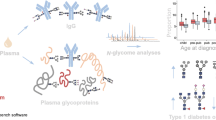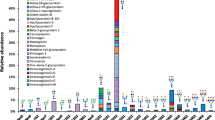Abstract
Objective. α1-acid glycoprotein (AAG) is a major binding protein for neutral and basic drugs because of its great drug affinity. AAG has three main genetic variants – F1, S, and A variants. Several attempts have been made to elucidate the differences in compositions of the carbohydrate moiety and structure–function relationships such as drug-binding differences. However, there have been few reports on age- and gender-related differences in compositions or concentrations of the carbohydrate moiety of AAG variants. The aim of this study was to clarify the age- and gender-related differences in carbohydrate concentrations and in drug-binding capacities of AAG glycoforms.
Methods. The sera used in this study were obtained from 32 healthy subjects (17 men and 15 women, aged 16–84 years). The AAG glycoforms were isolated by hydroxyapatite chromatography. The binding capacity of AAG to disopyramide (DP), which is a basic drug, was determined using the ultrafiltration method. The concentrations of N-acetylneuraminic acid (NeuAc) and monosaccharides in AAG were determined using high-pH anion-exchange chromatography with pulsed-amperometric detection.
Results. The mean plasma AAG concentration in the female subjects was significantly lower than that in the male subjects (0.67±0.12 mg/ml, mean±SD, in females, n=15, versus 0.81±0.17 mg/ml in males, n=17, P<0.05), but no age-related differences were found (0.75±0.18 mg/ml in young subjects, n=24, versus 0.77±0.12 mg/ml in older subjects, n=8, n.s.). However, the degree of branching of the glycan chain in the female subjects was significantly lower than that in the male subjects (1.61±0.17 mol/mol, mean±SD, in females, n=15, versus 1.75±0.23 mol/mol in males, n=17, P<0.05). There was a significant inverse relationship between the binding capacity of AAG to DP (Cb/AAG) and the degree of branching of the glycan chain. The binding capacity (Cb/AAG) decreased as the degree of branching in AAG glycans increased. The binding capacity (Cb/AAG) in the female subjects was significantly higher than that in the male subjects (2.79±0.59 mg/g AAG in females, mean±SD, n=15, versus 2.37±0.29 mg/g AAG in males, n=17, P<0.05).
Conclusion. The degree of branching of the glycan chain in AAG plays an important role in drug-binding capacity. Gender-related differences in drug-binding capacity (Cb/AAG) may be caused by differences in the ratios of the extent of branching of the glycan chain in AAG.
Similar content being viewed by others
Author information
Authors and Affiliations
Additional information
Electronic Publication
Rights and permissions
About this article
Cite this article
Kishino, S., Nomura, A., Itoh, S. et al. Age- and gender-related differences in carbohydrate concentrations of α1-acid glycoprotein variants and the effects of glycoforms on their drug-binding capacities. Eur J Clin Pharmacol 58, 621–628 (2002). https://doi.org/10.1007/s00228-002-0530-x
Received:
Accepted:
Issue Date:
DOI: https://doi.org/10.1007/s00228-002-0530-x




